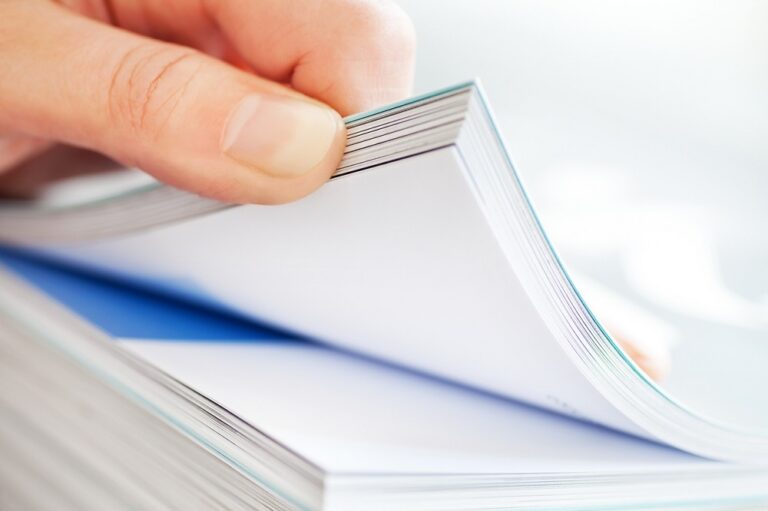In the world of bookbinding, saddle stitching is a popular and cost-effective method for binding books and booklets. Whether it’s a small pamphlet, a brochure, or a magazine, stapled binding stitching provides a clean and professional look. However, one crucial aspect that often gets overlooked is the choice of paper. The paper you select can significantly impact the final product’s appearance, durability, and overall quality. This article explores the importance of choosing the right paper for saddle stitched books.
1. First Impressions Matter
When someone picks up a saddle stitched book, they first notice the cover. The paper you choose for the cover can make a significant impression. It needs to be sturdy enough to protect the inner pages and should also be suitable for printing high-quality graphics and text. A thicker cover stock with a glossy or matte finish can enhance the book’s overall appeal.
2. Interior Pages and Readability
While the cover grabs attention, the content shines on the interior pages. The paper for the inner pages should balance weight and opacity. Lightweight paper may allow for more pages in the book, but it can lead to show-through, making the text on one side visible from the other. The thicker paper provides better opacity, improving readability and the overall feel of the book.
3. Consider the Purpose
The type of paper you choose should align with the purpose of the book. For example:
Brochures: If you’re creating a brochure for a high-end product or service, selecting heavier and more glossy paper can convey a sense of luxury. On the other hand, informative brochures may benefit from lightweight, easy-to-read paper.
Magazines: Magazines often use a combination of paper types. Glossy pages are typically used for advertisements and high-quality images, while matte paper is used for articles and content. This contrast in paper types adds visual interest.
Booklets: Booklets, such as event programs or instruction manuals, can benefit from a balance between readability and durability. A medium-weight paper is often suitable for these purposes.
4. Environmental Considerations
In today’s environmentally conscious world, many readers appreciate eco-friendly choices. You can opt for recycled paper or paper sourced from sustainably managed forests. Including an environmental certification, such as FSC (Forest Stewardship Council), on your stapled binding can show your commitment to sustainability.
5. Printing Compatibility
The paper you choose should be compatible with your printing method. If you’re planning to print high-resolution images, ensure that the paper can handle this without smudging or bleeding. Discuss your printing needs with your printer to select the most appropriate paper stock.
6. Folding and Creasing
Stapled binding books require folding the printed sheets in half before binding. The paper should be able to withstand this process without cracking or creasing excessively. Choosing a paper with good foldability is essential to maintain the book’s structural integrity.
7. Cost Considerations
Finally, the choice of paper can impact the overall cost of your stapled binding book project. Higher-quality and specialty papers may come at a premium price. Quality print enhances the reading experience and leaves a lasting impression on your audience. Additionally, sustainable paper options often have a high-quality look and feel, making them a win-win for both aesthetics and ethics. Consider your budget while making your paper selection, but also keep in mind that the paper’s quality can significantly influence the perceived value of your book.
Conclusion
Choosing the right paper for saddle stitched books is a decision that should not be taken lightly. It affects the book’s aesthetics, durability, and functionality. By considering factors such as the book’s purpose, environmental concerns, printing compatibility, and budget, you can make an informed choice that ensures your saddle stitched book leaves a lasting impression on its readers.
